Let's face it, the world is quickly shifting towards a digital age where information is conveyed in the most efficient, accessible, and aesthetically pleasing ways. One such innovation that has revolutionized how we interact with data is the QR code. More specifically, the audio QR code.
This article will guide you through the process of creating your a QR code for music/audio, the benefits it offers, and how you can utilize it to expand your reach and influence.

Part 1: What Is a Audio QR Code?
A music or audio QR code is a unique type of barcode that, when scanned, leads the user directly to a piece of audio content. This could be a song, an audiobook, a podcast, or any other form of audio content. It is generated through a music QR code generator or an audio QR code generator and can be scanned using any smartphone.
Traditionally, sharing music or audio content would require you to send a link, which the receiver would then have to click to access the content. However, with a music QR code, the process is streamlined. The user only needs to scan the code to gain immediate access to the audio content, thereby eliminating the need for links and creating a seamless user experience.
Part 2: How to Create QR Code for Audio
Creating a music QR code is a great way to share your favorite tracks, albums, or playlists with others. Recipients can simply scan the QR code to listen to the music you shared. iMyFone QRShow happens to allow you to convert any audio into a QR code.
- Supports multiple music platforms such as Spotify, Apple Music, YouTube, etc.
- Multiple customization options include color, shape, and design.
- Download music QR codes in high-resolution formats such as PNG, SVG.
- Tracking the performance of music QR codes includes monitoring the number of scans, geo-location, and device type.
Now let's check how to convert audio file to QR code.
Step 1: Sign up your account on the iMyFone QRShow QR code generator.
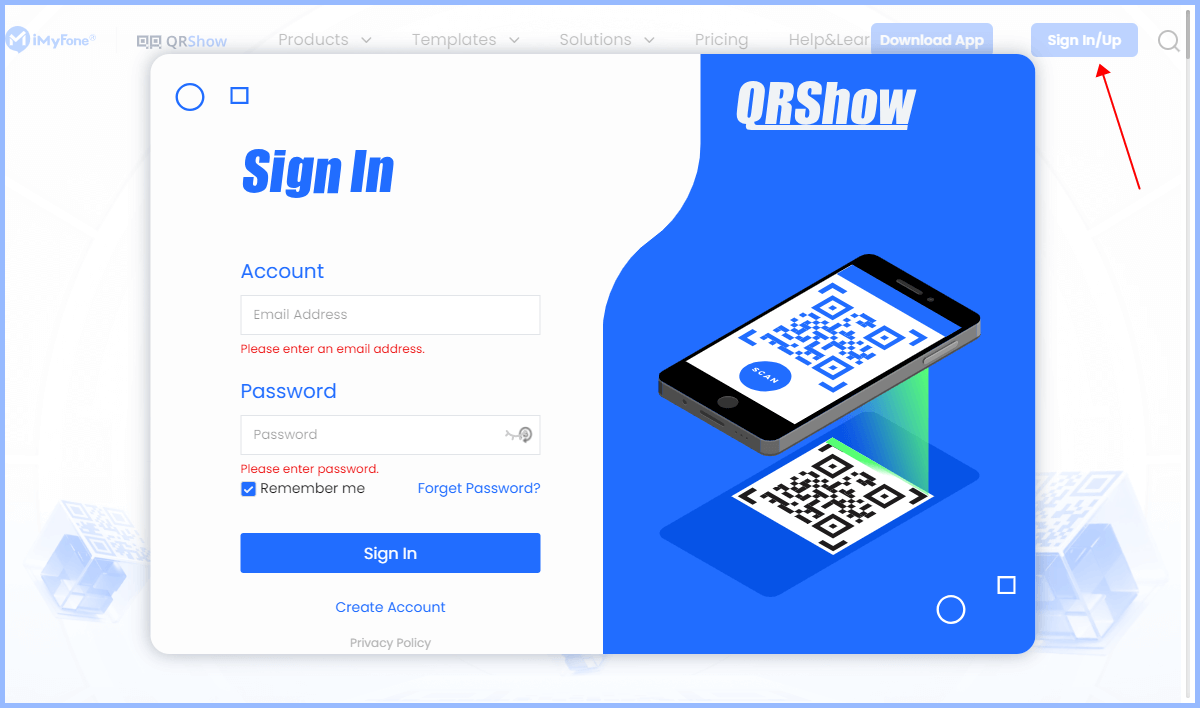
Step 2: Click Create QR Code and then choose Audio from the Dynamic QRcode tab.
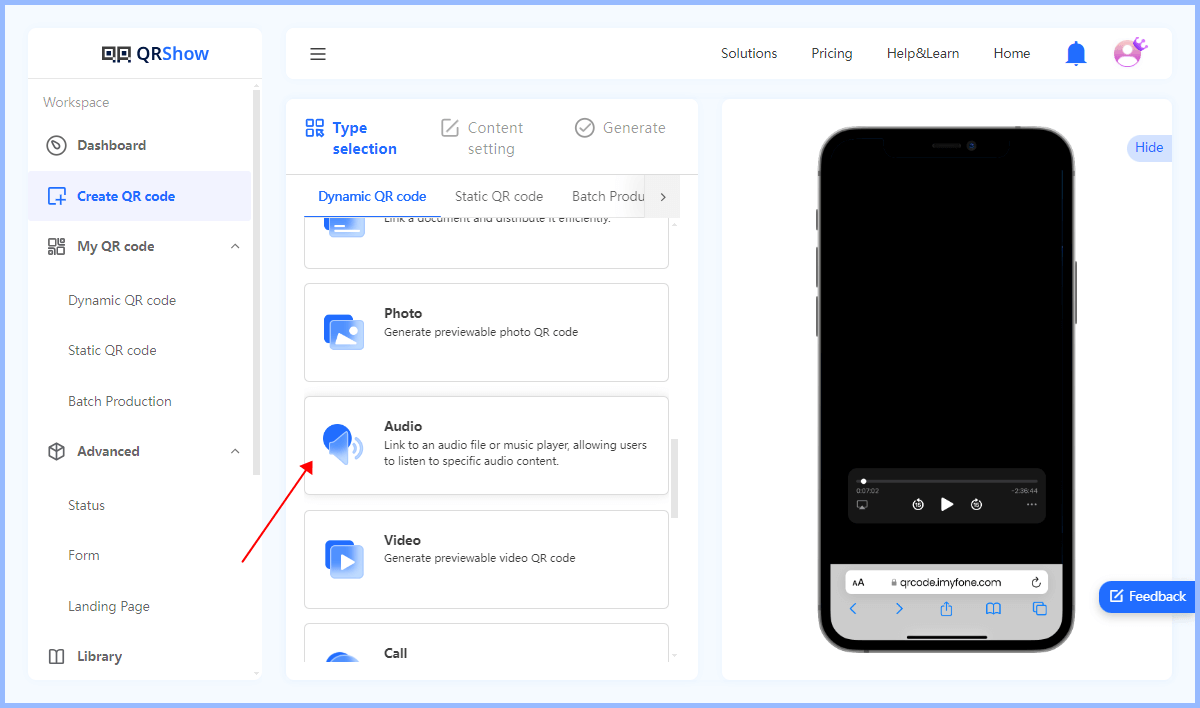
Step 3: Upload your music or audio files. You can set the QR code as public or private with password protected.
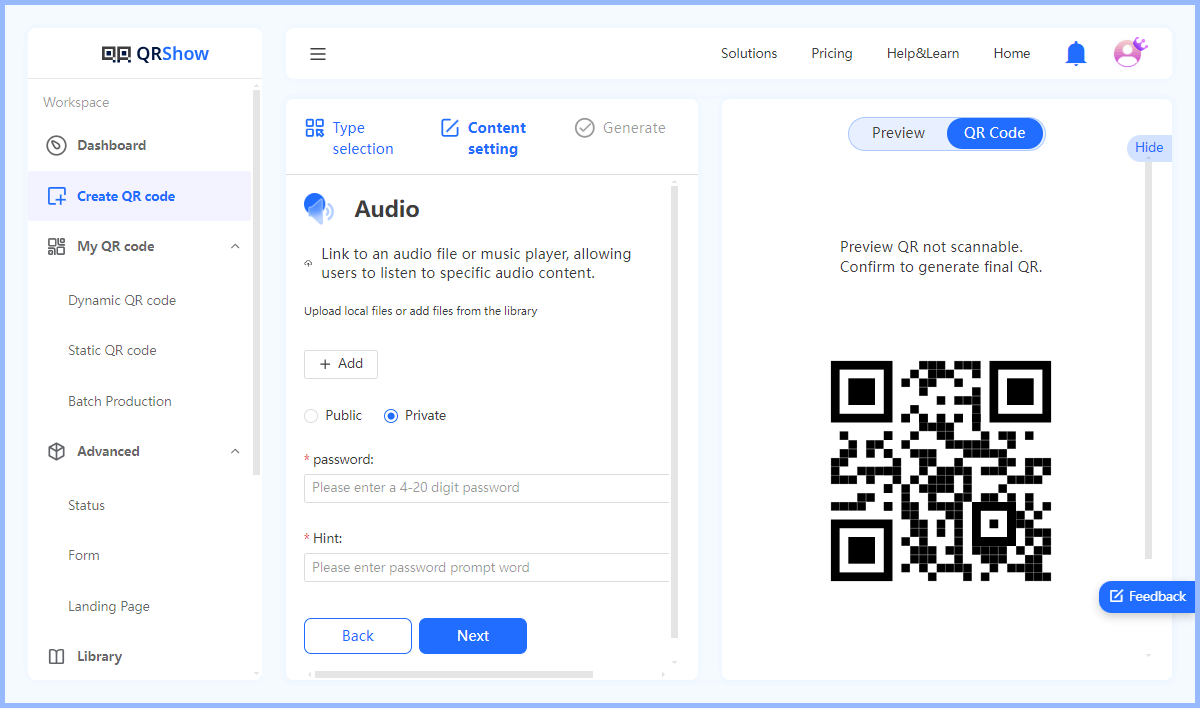
Step 4: Customize your audio QR code by choosing templates, logos, frames, etc. Finally, click Generate to create a QR code for music playlist.
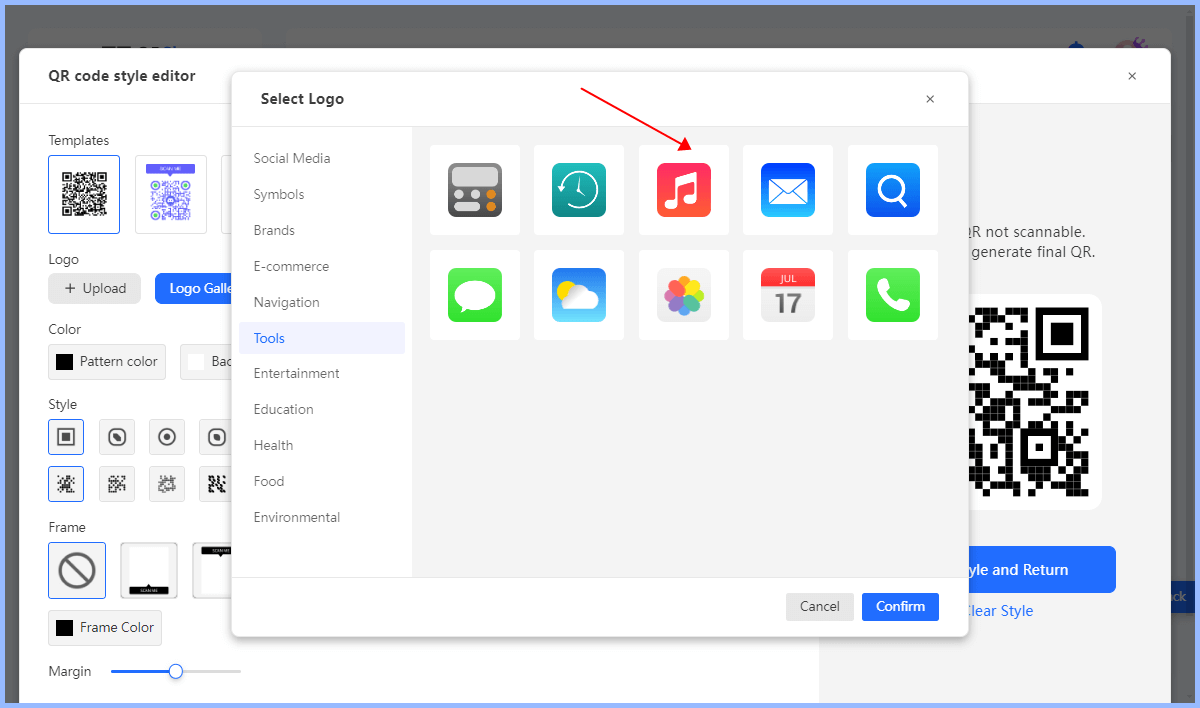
Part 3: The Advantages of Using Audio QR Codes
So, why should you consider using music QR codes? Here are some of the advantages.
1. Easy Access
QR codes for audio offer a unique and innovative way to share your music or audio content. Compared to sending a link that can get lost in the sea of online content, QR codes ensure that your audience can access your content immediately and easily.
2. Versatile
MP3 QR codes are versatile and can be used in both online and offline marketing strategies. For example, you can incorporate them into your social media posts, emails, or even print them on your business cards, flyers, or posters.
3. Easy to Track
By using a music QR code generator that offers tracking features, you can monitor how many people are scanning your QR code, from where, and at what time. This important data can help you optimize your marketing strategy and better understand your audience's behavior.
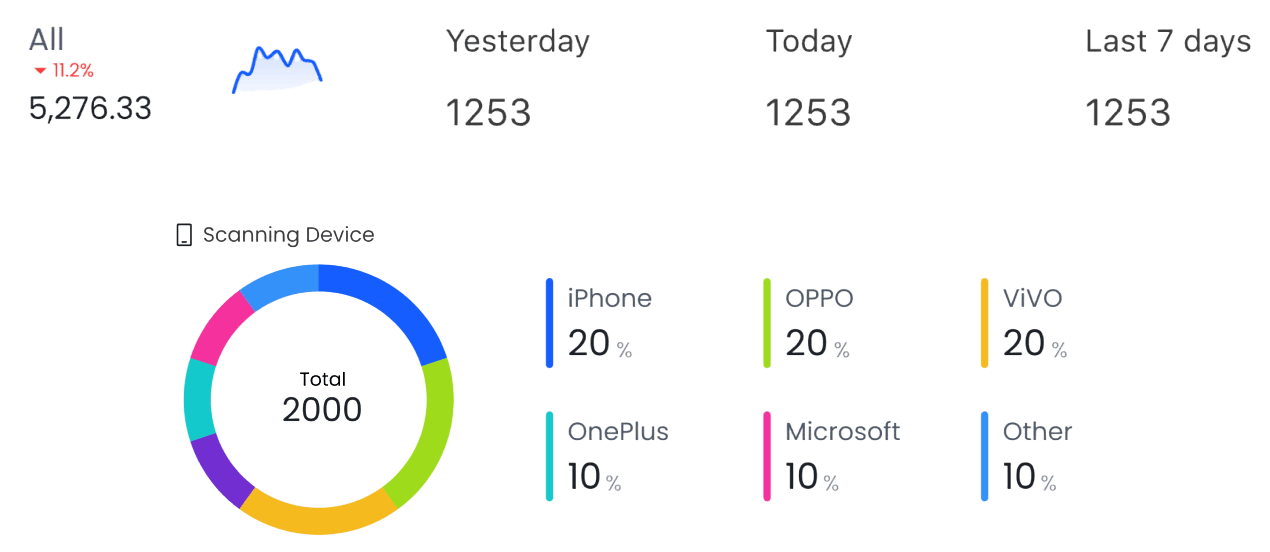
4. Space-saving and Cost-effective
MP3 QR codes are small and can be printed on almost any surface, making them a space-saving solution for music sharing. They can be added to business cards, concert tickets, album covers, and more. QR codes are relatively inexpensive to create and distribute compared to traditional marketing methods. This makes them ideal for independent artists and small businesses with limited budgets.
Part 4: Practical Uses of Audio QR Codes
QR codes for songs can be used in a variety of ways.
For artists, they can be used to share new releases, demos, or teaser tracks. Musicians and artists are now using QR codes on their concert posters, album covers, and merchandise. By scanning the code, fans can access exclusive content, behind-the-scenes footage, or unreleased tracks.
For businesses, they can be used to share podcasts, audiobooks, or instructional audios. A restaurant may have a QR code on their menu that leads to a playlist of their background music.
For educators, they can be used to share lectures, tutorials, or educational materials. A teacher may have a QR code on a study guide that leads to an audio lecture.
In marketing, music/audio QR codes can be incorporated into both online and offline strategies. They can be printed on promotional materials such as posters, flyers, or business cards, or shared on social media platforms, websites, or emails.
Part 5: Tips for Marketing with Audio QR Codes
When marketing with a QR code for music, there are a few tips you should keep in mind.
1. Scannability
First, make sure your QR code is easy to read. This means it should be clear and large enough for easy scanning.
2. Testing
Second, always test your QR code before distributing it. This will ensure that it points to the correct audio file and works properly.

3. Tracking Features
Also, remember to take advantage of the tracking and analytics features of your music QR code generator. This will allow you to monitor the performance of your QR code and make necessary adjustments.
4. Call to Action
Always add a call to action (CTA) near your MP3 QR code. This can be a simple instruction like "Scan to Listen" or "Scan for a Surprise." The CTA will guide your audience on what to do and spark their curiosity to scan the code.
5. Customization and Branding
Customize your audio QR code to match your brand's colors, logo, and overall aesthetic. This not only makes the QR code more visually appealing, but it also enhances brand awareness.
Conclusion
In conclusion, audio QR codes offer a unique, efficient, and innovative way to share audio content. By choosing a reliable music QR code generator, you can easily create your own QR codes and revolutionize the way you share your sound. So why wait? Start creating your audio QR codes today and take your marketing strategy to the next level.






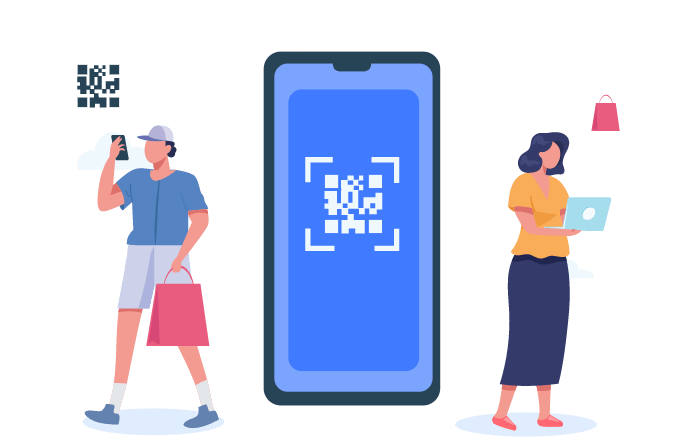


Rated Successfully!
You have already rated this article!